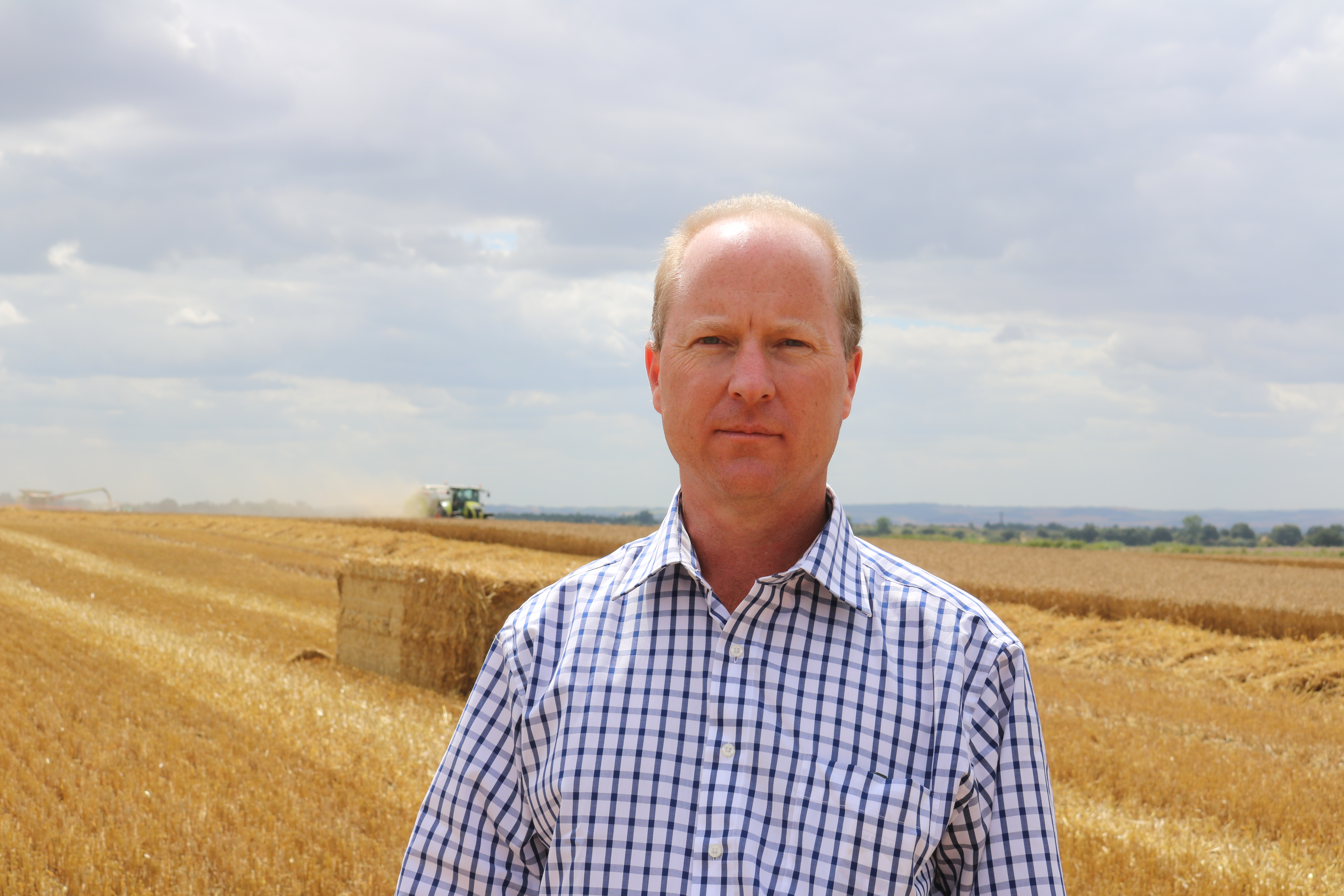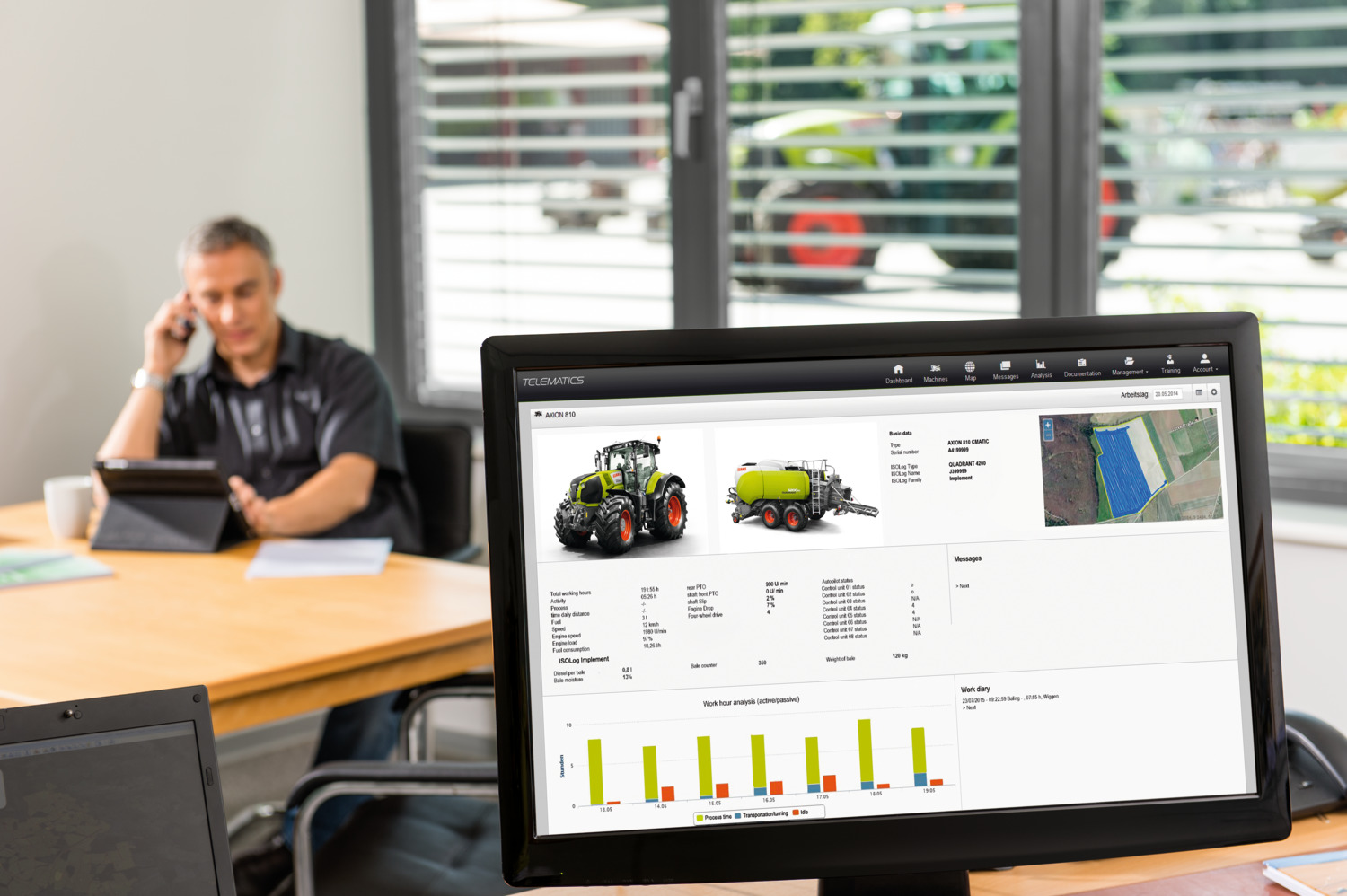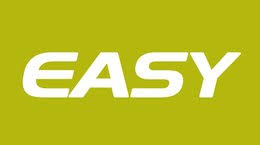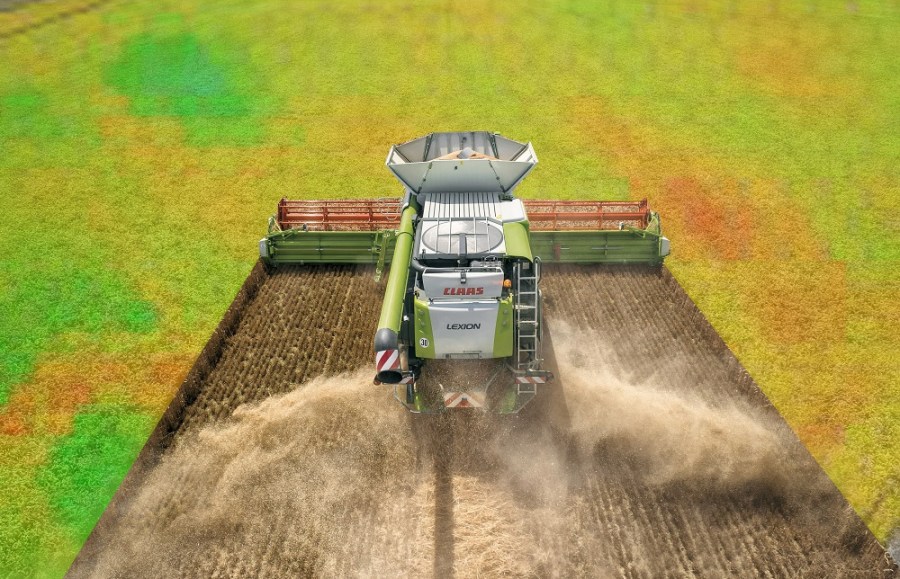Data should be seen but not manually transferred – that’s the mantra for Claas Telematics. CPM steps through the set-up.
It’s so simple as there’s zero input required from the machine operator.
By Tom Allen-Stevens
If hassle and expense are two factors that have held you back from yield mapping, now may be the time to take another look.
Claas has made changes to its Telematics service, and it’s not just the large fleet users and contractors the German manufacturer has in mind. The improved service is set to appeal to smaller and medium-sized farmers, believes Edward Miller, of Claas EASY (Efficient Agriculture Systems).
“A lot of Claas customers are owner-managers who are reluctant to take full advantage of all the features that come with their machine because there’s a perception it’s just too much like hard work.”

90% of those Claas customers who yield map do so through Telematics, says Edward Miller.
Ten years ago, that may have been the case – to set yourself up for yield mapping on most combine harvesters was quite a laborious process involving chip cards and a fair degree of set-up required from the operator. “There was a lot of of manual input and opportunities for things to go wrong, and they did go wrong. This meant farmers often didn’t get data they could use,” recalls Edward.
“Today, 90% of those Claas customers who yield map do so through Telematics. It’s so simple as there’s zero input required from the machine operator. Most importantly, all the data is loaded automatically onto a cloud-based platform anyone can access, as long as they have the right permissions. So advisors and third parties you deal with can get your data without having to hassle you for it.”
Richard Tait of Soyl has spent the best part of two decades setting up farmers with their Claas combines, and agrees perceptions about the technology can act as a barrier. “Technology-driven agriculture doesn’t have to be complex and you don’t have to be technically savvy to get real value from yield mapping.”
So what’s the process? “The first step is to find out if you have a set of electronic field boundaries. Claas Telematics needs these so it knows when the machine has entered one of your fields and will start automatically recording data.”
Electronic field boundaries can be exported from mapping software, such as Gatekeeper, while if you have a sprayer enabled with section control, for example, the boundaries may be exported from the control terminal. “Otherwise, it’s a case of sitting in front of a computer and drawing them up – there’s a useful, free package in Google Earth that’s very easy to use.”
Those familiar with the Rural Payments Agency’s new map-based portal may not be surprised to know these boundaries can’t currently be exported, however. “Even if you could use the RPA maps, the data rarely correlates well with what you find in the field, and you’d spend extra time cleaning it up.”

The Basic level of the Telematics service gives you machine monitoring, auto-uploading information on position and status, with optional remote diagnostics.
When it comes to harvest, Richard notes the data you get out will only be as good as the set-up of the machine on the day. “It’s most important to make sure the combine yield and moisture meters are correctly calibrated. A smooth operation in the field, cutting full header widths, will give you the most reliable data, although Claas Telematics does compensate for a part-header width.”
But the difference with Telematics is that it removes the need for any other driver input, notes Edward. The only requirement is to set up an account through the Claas website and upload your field boundaries. “It takes five minutes to set up an account, and loading up the field boundaries is then a one-off process. You use this portal to set up permissions and turn on various features on Telematics-enabled machines.”
There are two levels of the Telematics service available to UK growers – Basic gives you all the main features required for machine monitoring, auto-uploading information on position and status, with optional remote diagnostics. There’s the ability for you or others to download your data, that can also be accessed and displayed as maps on the Telematics website or via the smartphone and tablet app. The Professional level brings in more reporting and analytics, while Automatic documentation is the add-on module that generates yield maps automatically.
“Once registered, you’re all set for yield-mapping, and a host of other optional services, to happen seamlessly in the background, while you can focus on using the data to make informed decisions,” notes Edward.
Currently, this “seamless” movement of data will just take place from the machine to the Claas cloud-based data-storage facility, from where it can be downloaded in standard formats to a host of other platforms and applications. But cross-platform seamless transfer is just around the corner, he reveals.
“We’re working on an application programme interface (API) with Gatekeeper, that should be ready for 2019 harvest. Then, all Gatekeeper users will have to do to download the data is touch a sync button in the software.” APIs for other platforms are due to follow.
“Another new feature we’re introducing is that we can clean your data once it’s uploaded,” he adds. “One of the aspects of yield-mapping on combines is that you get spurious data points and tails as you turn on headlands. An algorithm that will be available for next harvest will ensure your data is accurate and ready to use.”
These improvements will make the service truly hassle-free, assures Edward, bringing benefits beyond just crop management. “Telematics helps you manage your machine, logging information on location and any maintenance issues, which can cut downtime and repairs. The option for remote service will flag up maintenance problems as an alarm with the dealer, who may know what’s wrong with your combine before you’re even aware that there’s an issue.”
- Claas Telematics is available on all Claas combines, tractors, and forage harvesters and any implements linked via TONI (Telematics on Implement). The app is available free to download to iOS and Android smartphones and tablets. The Basic package with Automatic documentation costs £500/year while the Professional package costs £800/year.
Decisions driven by data
Once you’re all set up, what do you do with the data? Richard Tait advises farmers to address the three W’s:
- What did the crop do?
- Where did it do it?
- Why did it do it?
“Increasingly, farming is becoming data driven – the best management decisions are those that are evidenced with reliable information. Those who use it wisely become better at doing what they’re already doing well, and while good data analysis is advisable for farmers and farm managers, it’s almost essential for advisors,” he notes.
“So the platform you use is important. The Claas Telematics website allows you to view the basic data, but this will only show you yield-mapping data for one year. The value comes in looking at trends in datasets over a number of years and layering in other data, such as soil analyses, nutrient maps and NDVI scans.”
Areas that are consistently higher yielding are worth nurturing, he points out – monitor them closely to make sure macro and micronutrient levels are maintained.
The cause of consistently poor-yielding parts may be traced to soil type, topography, blackgrass or compaction, for example. “The important step is to find out if this can be rectified, which may well require an investigation with a spade. If not, maybe it’s worth taking that area out of production,” suggests Richard.
Digital Direction
As arable farms progress towards a digital future, it can be difficult to know which forms of data generation, capture and analysis provide a really worthwhile benefit to the business, and which are costly and time-wasting distractions. CPM is working with some of the industry’s leading companies in this area to bring growers some Digital Direction. These articles track the significant steps on the journey towards the data-enabled farm, and also explain and profile the technologies involved.
CPM would like to thank Claas for sponsoring this Digital Direction article and for providing privileged access to staff and material used to help bring it together.
The combined electronics expertise of Claas can be summed up in a single word: EASY (Efficient Agriculture Systems) that simply allows you to get more done. Claas Telematics helps you to analyse and optimise the work processes on your farm and cuts the amount of valuable time spent on maintenance.





